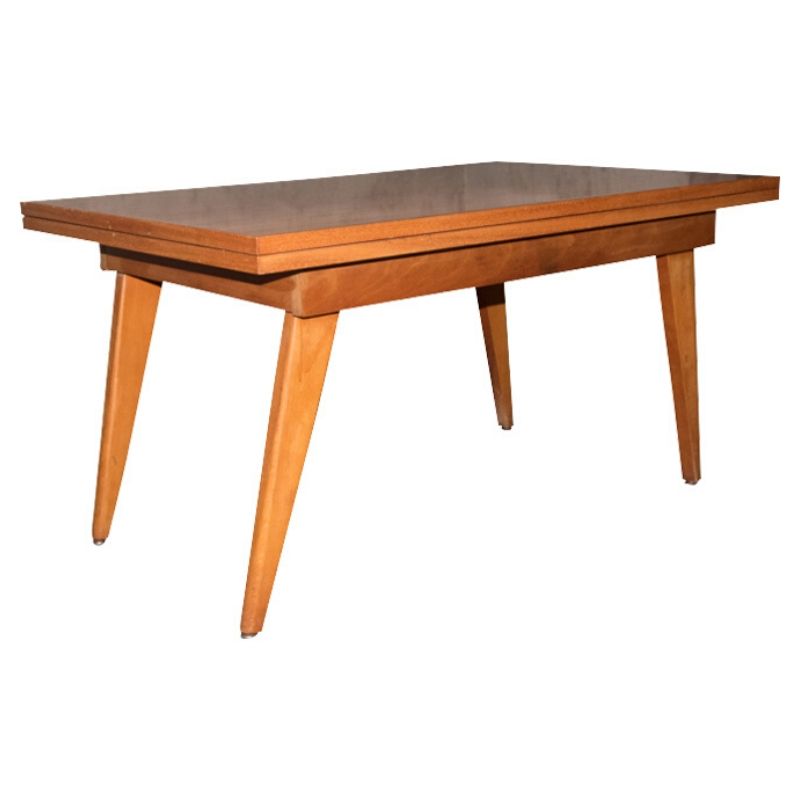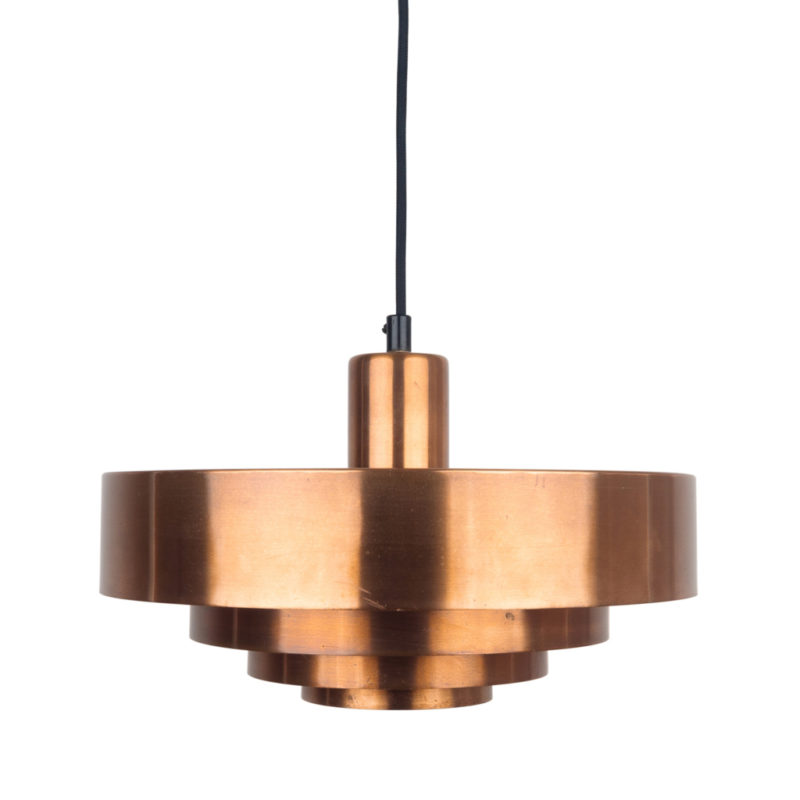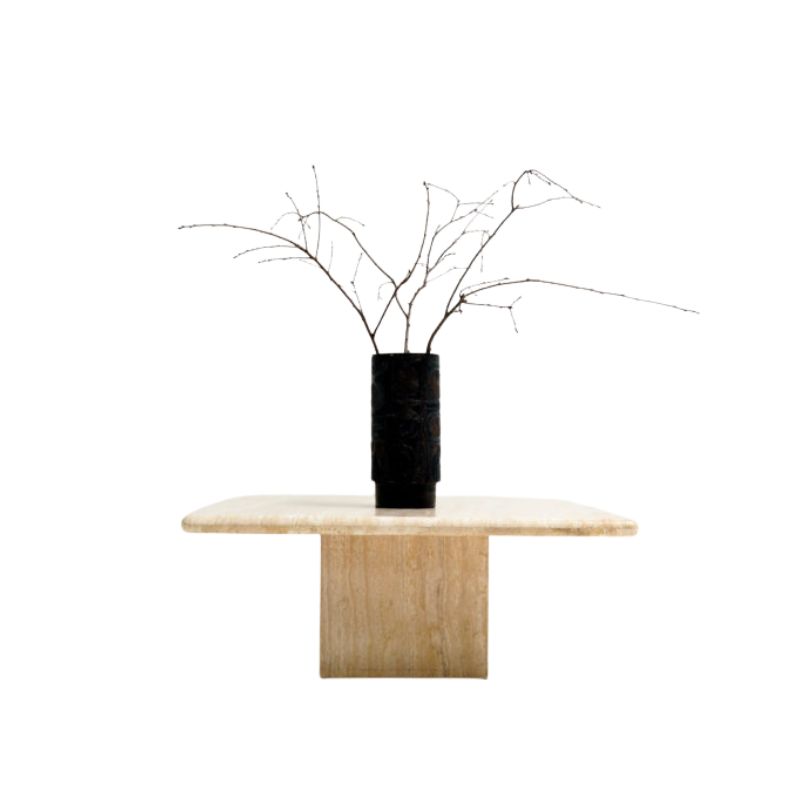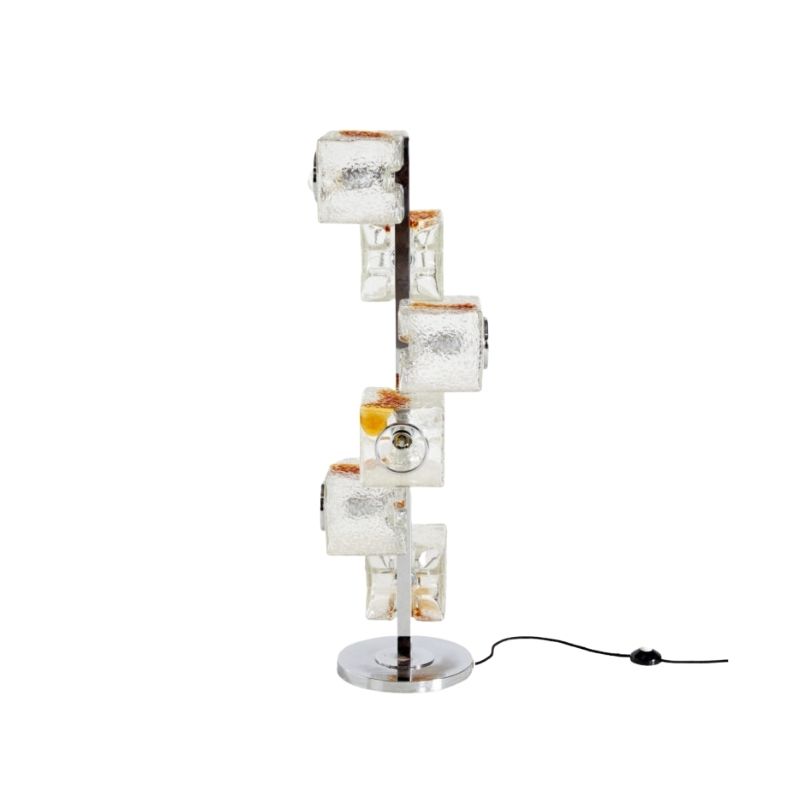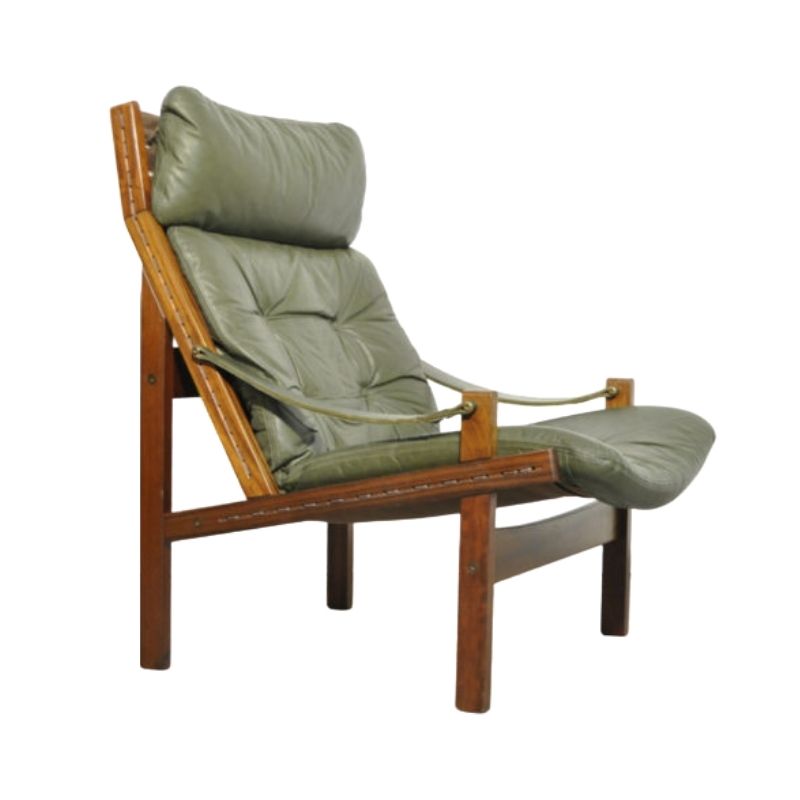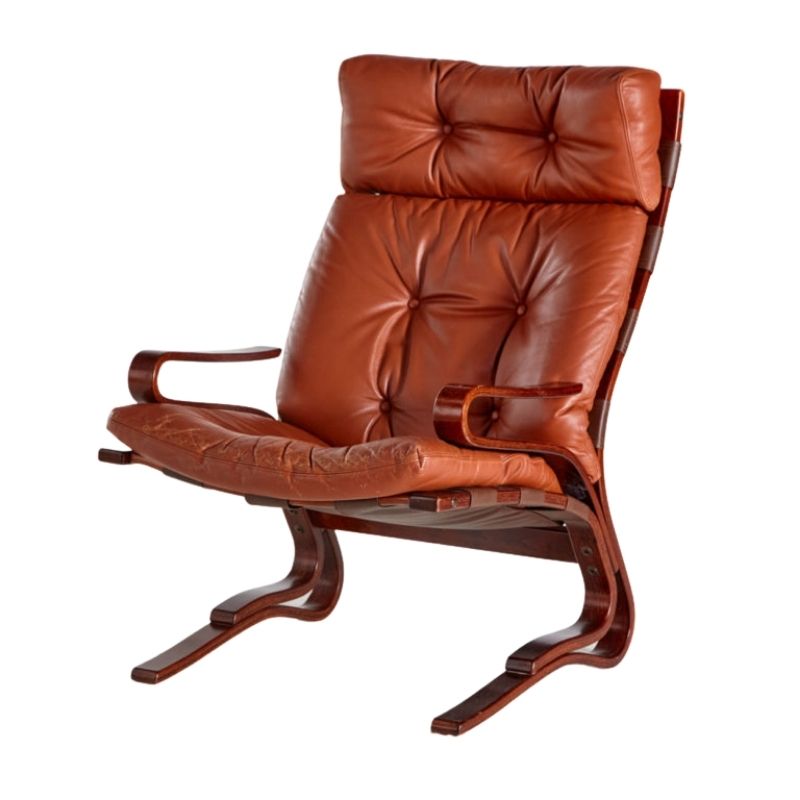Yeah... I mostly just look at stuff on modern-fabrics.com, 'cause their site is so easy to use, and then chase down specific fabrics with manufacturers. Every week or so, I will order more samples from their site, but I think I've annoyed them 'cause it's been almost two weeks since the last time and I had to kindly email and ask if my order had been submitted wrong.
I do see these chairs in solids and I'm not against that, if the fabric works. There is one upholsterer I've used that has books of samples. He's done good work before and I'm planning on taking these in to him and getting his opinion. If you want to keep going on about fabric while I'm gone, please feel free!
If the foam has deteriorated to the point where the fabric is slack, then you can't measure the thickness using the needle-poking method. But your fabric doesn't look loose at all.
Latex foam doesn't get significantly softer as it ages, it just oxidizes into a hard crust that crumbles in to orangey-yellow sand that gets all over everything. It cannot be revived once this happens. It also doesn't compress, if that's what you mean--not the way urethane foam does from someone sitting on the same end of the sofa for years. It's way more resilient than urethane foam, which is why it's so comfortable.
I recommend this out-of-print book (but still easy to find) on upholstering---very clear drawings and instructions, very well organized and easy to follow. I learned the craft from it a long time ago and still refer to it when i get some weird thing. I liked it because if I got to a point where my piece didn't look right and I couldn't figure out how to do what it was showing in the book, all I had to do was check the step before which was invariably where I went wrong--then just correct that and move on. You do have to be meticulous and detail-oriented, but you sound like that type.
-- Furniture Upholstery (Sunset Books, 1980-ish editions) --- lots of cheap used copies on Amazon
You can learn a lot about fabrics by collecting swatches and just studying new and old furniture of all styles when you are out and about. There's a lot of cheaper new furniture that is really badly upholstered---and new, better quality stuff that looks pretty much flawless but isn't always comfortable to sit on (another big part of upholstery--getting the support and foam density just right).
I wouldn't advise starting on something like a Karpen chair though---but you probably already know that! Ottomans are a good starter project. You also don't have to invest in a lot of expensive tools to get started.
I'm gonna get that book.
I did a little research yesterday, and I think I now know why there seem to be so many poorly-recovered examples of these chairs: the foam is polyurethane, not latex, and the shape is formed in a mold around a steel tube frame. Pretty wild, eh? "The Chair Of Tomorrow," they called it.
Most everywhere I see these offered, they're described as "early 1950s" or something like that. Apparently, the line, called the Karpen Chair-Foam Collection, was introduced in 1961 at a January show in Chicago and manufactured at the Karpen factory in Rushville, IN. The process was invented by The General Tire & Rubber Company for Karpen.
I'm not really sure why, now, these are always attributed to 'Karpen of California', or even how that started, as the tags say nothing about California. One of the Karpen brothers did start a California division, I guess, but I think that was many years before the company was sold in 1951. Schnadig Corporation, which owned Karpen in '61, did have a location in Corona, CA. Maybe they made some there, I don't know. Any search for 'Karpen of California' just invariably results in these chairs. Strange.
So... how would you say this changes my plans to recover?


Interesting background! I'd never noticed these chairs until someone posted pics on DA a year or so ago. I love this place.
You can get the same look as the originals with urethane foam by carefully building up layers and trimming the edges with a razor. It takes more time and there's no way Karpen could have done it this way and not charged a lot more for their chairs. Production-wise, it would save money to create molds and form the foam that way. I think, anyway. But whatever---it can be done by someone with the skills and the desire to get the right look.
Fascinating.
In that case, I would take a good close look at the foam after removing the fabric. And give it a good sniff test. Because I would not want to have to replace this foam unless
If the foam does not pass the sniff test, I have a novel idea for you: sprayed polyurethane foam roofs are coated with an elastomeric "paint," which is a vapor barrier/retarder. If the foam has interesting smells, but appears to be in reasonably good condition, I would think you could paint it with one of those "elastomeric roof coatings" to provide a "wall" between your nose and the smell. And you would be able to keep the original foam. I imagine it might also slow down the oxidation of the foam substantially. If you do decide to consider this route, I would suggest painting a random block of foam with some of the material as a test to make sure that the foam still "squishes" like you want, etc, etc as I've never actually heard of this being done in practice. But then unusual situations call for unusual solutions.
Also, foam can be very easily carved with an electric turkey knife. If you do replace it, you need to find yourself foam sculptor wielding an electric turkey knife.
That's funny, leif... I had a very similar thought. Like maybe even spray enough of a substance to form a mold? I mean that sounds crazy, and probably is... I don't know. I imagine you could rig it up so that the steel frame could be positioned correctly, like frame the legs, perhaps, as I imagine they must screw directly in that way. But I've never poured foam and from what I understand of the technology, it was rather blown or injected. But possibly I could find the proper professional. I have a carving knife and am a decent sculptor, but... Seems like nothing would be as good as the original process. Hrmm.
Any thoughts on this stuff:
http://www.modenus.com/catalog/m/joseph-noble/p/salon/pdf
I don't know... too heavy?
I think that voucher looks like a vey good candidate.
I would be curious if the foam has a skin on it. I think it probably will because the huge blocks that foam is cut out of have a skin on them, presumably from the mold it was blown/sprayed/poured into. Further I wonder if that skin has protected the foam from degradation? Also if it indeed does have a skin, and must be replaced with carved slabs, I wonder if one way of approximating the thick skin would be elastomeric paint....
I think that more investigation of the foam will be necessary before you are able to decide what the best course of action will be.
I can't tell from that photo if the fabric would work---it has a nice look but you'd really have to see it in person to know for sure. The weight and hand of a fabric are really hard to judge from photos.
You should also look at Coco by Knoll if you want to go in that direction---Knoll will send you swatches right away. I've seen Coco in person and I think it would work nicely.
https://www.knoll.com/knolltextileproductdetail/Coco
It's a little pricey at $104/yd but I've seen it at Modern-Fabrics in the past and i'm sure it pops up on Ebay, too.
Here's a video on how latex foam is made today:
https://www.youtube.com/watch?v=rpBEJq5JFdc
It's quite a process and the cooking time is carefully calibrated. I talked with someone years ago who made rubber stamps out of raw rubber with a vulcanizer and she said that it's a very precise process---and also that the freshness and quality of the raw rubber varied enough when she got it to affect the finished product. And that's without the added step of whipping air into it.
The "skin" that is on molded latex cushions occurs when the latex is in contact with the smooth mold surface. I imagine it does slow down air flow in that it's less porous than the body of the foam, but it's also very thin. I've stripped lots of furniture with molded foam and have never noticed much of a difference in the rate of drying out. I suspect that the freshness of the latex when it was made into foam, the exact cooking and curing times, etc., are factors in the longevity of it, too. Air circulation throughout the foam is definitely a factor, which we all know---and maybe foam old latex foam on some chairs is still good partly because no one sat in them much over the years? If you keep that foam and you use the chairs a lot, well... (I once kept some latex sofa cushions that had been in vinyl for 50 years and were still in good shape---i put fabric covers on them and they lasted only a few more years. It was my own sofa so I was ok with experimenting, and it was easy to just stick some replacement urethane foam into the covers.)
I'd be leery of adding a coating to the existing foam without knowing the long term effects. It may have a slow chemical reaction with the latex. It would be kind of sad to have to redo a $1200++ of new upholstery in a few years because the padding started to fail. Maybe it wouldn't! Maybe it's a great fix. But there are unknowns.
Ultimately, it is relatively easy to get the exact same finished look of the chair with readily available upholstery padding materials, the lifespan of which is known. These are vintage chairs, not museum artifacts that require historically accurate restoration. A good upholsterer can make them look like factory originals.
The newspaper article above by mgee76 says that Th chairs are molded polyurethane, not latex. This is what got me thinking about the fact that there are sprayed polyurethane foam roofs, top coated with elastomeric paint that have been around for decades now. They are generally considered to be indefinitely lasting roofs with maintenance, and that is exposed to rain, snow, and massive UV light, which a chair would not see.
If it were Latex foam inside I would have a lot more doubt.
Ah, ok, I thought he said there was orange dust sifting through the fabric but maybe that was the other conversation on DA right now about upholstering. It never rains, but it pours.
Still, it will not be hard to get the same finished look with new foam and other types of padding, whatever combo works.
I think the orange dust must have been coming from the fabric backing? I'm not sure.
Just to go over... should I need to replace all the foam, the process is simply to layer sheets and glue them together, then sculpt them to fit the shape. Yeah? I just wonder about working around the steel tube frame. I guess it is all up in the air until I open one up, huh. Dammit.
The orange dust could be from the fabric. I guess it's possible that it's the foam--urethane foam does degrade after awhile and indeed, the best urethane foam on the market now only has about a 20 year lifespan, though I think they judge it more by when it develops hollows, not when it starts to crumble. It does crumble--just not to a dry dust. I've seen lots of early urethane foam that sort of looks ok and is still soft---but when you brush away the little surface crumbs, it just sheds more and more crumbs. They're not quite gummy in texture but approaching that. I guess they could sift through a loosely woven fabric. Maybe.
Anyway, I did a couple of sketches to show you what i was talking about. I also looked at your ads for the chair and see that it has a sinuous spring seat--that's good!
I'd probably start with filling in the frame with whatever thicknesses of foam are needing to give you a flat plane on inside back and seat and on the outside. Apply spray adhesive liberally to both surfaces and press together with the springs in between.
Then just add another layer to each but cut them big---whatever the thickness is, that's about how much the foam layers should extend past the frame edge.
Trim to the shape of the finished foam dimensions, plus a little, then undercut the edges, apply spray adhesive to both cut edges, wait for adhesive to dry a bit, then press the edges together. This will give you a very smooth curve. I used to do this shaping with a serrated knife, electric carving knife, and/or scissors---but this way gives the smoothest surface with the least amount of work.
You do have to switch to a fresh razor blade fairly often but they're cheap and the used ones are still sharp enough for most other kinds of work. (Not sure I'll ever use the several hundred I have accumulated over the years, however!)
My sketches show you the cross section of the edge, mostly---obviously you'd angle the foam cuts like that all around the perimeter of the chair.
Add layers to build up the thickness INSIDE the final outer layers. The thinner the foam, the less you need to worry about cutting the angles---but thin foam is less dense. By that I mean that two layers of 1/2" foam are not going to be as dense as 1" thick high density foam. Chair seats usually are most comfortable when they are firm to extra firm---depends a bit on the spring tension but generally a soft foam doesn't cut it.
3M Heavy Duty spray adhesive is a good one. I use Misty brand, which is about the same but half the cost from my local upholstery supply store. It holds forever. The foam will tear apart before the glue loses its grip.
But yeah, you won't know for sure what to do until you open it up. Maybe you'll be really lucky and the foam will be in great shape.


Here's a pair of Karpen Lounge chairs that are in original condition and upholstery.
If you goto the eBay listing you'll see a bunch of detailed photos after the description.
Hopefully, you'll find this helpful!
http://www.ebay.com/itm/Karpen-Sculptured-Lounge-Slipper-Chairs-Mid-Cent...


If you need any help, please contact us at – info@designaddict.com



